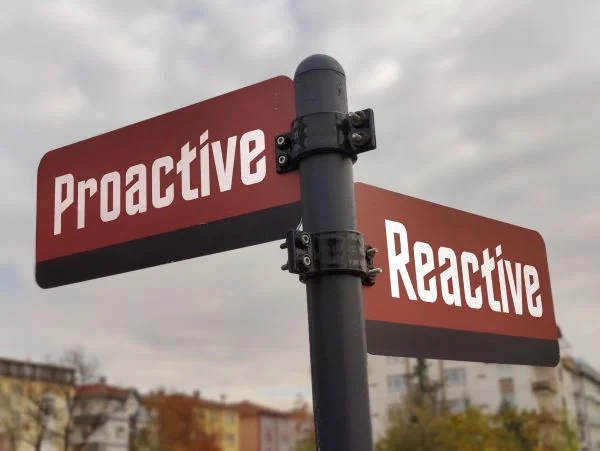Globally, the manufacturing sector continues to confront a tight labor market and macroeconomic supply chain issues causing an unfavorable business climate and ongoing economic uncertainty. While external factors may play havoc, in many cases it is the elements over which there might be greatest control causing the most heartache. Quality defects without known causes present some of the most significant challenges for manufacturers. The accumulation of defects, the over-reliance on containment strategies, the cumulative effect of multiple minor issues, and the misallocation of resources all contribute to a complex and costly problem set. However, by implementing targeted solutions such as Systems Improvement projects and empowering quality managers through tools like Potential Problem Analysis, manufacturers can effectively address these issues.
Skip to Part 2: The consequences of containment without resolution
Skip to Part 3: Death by a thousand cuts: The cumulative effect of multiple defects
Skip to Part 4: Misallocation of resources: addressing in-specification parts
Skip to Part 5: Additional responses to quality defects
Skip to Part 6: Preventing quality managers from being blind: The role of Potential Problem Analysis & Potential Opportunity Analysis
Skip to Conclusion: The path forward for manufacturing quality management
Part 1: The Accumulation of issues – the silent culprit
In the ever-challenging world of manufacturing, quality defects often accumulate unnoticed until they reach a critical mass. Initially, these issues might seem trivial, but as they pile up, they create a significant problem. This accumulation of defects can be likened to a silent assassin, sneaking up on manufacturers until they are faced with a mountain of rejected components, parts, or finished products. The gradual build-up of rejects – often referred to as the “slow bleeding” phenomenon – can be devastating to a manufacturing operation.
Better decision making
Implement data-driven decision-making processes that rely on real-time monitoring and analytics. Use predictive analytics to identify patterns and trends that indicate potential quality issues before they become critical.
Problem solving
Adopt root cause analysis (RCA) techniques to investigate and address the underlying causes of defects. Tools like Fishbone diagrams and the 5 Whys method can be instrumental in uncovering hidden issues but root cause unknown problems must be rooted out and addressed in order to prevent unwanted reject accumulation.
Prioritization
Use a priority matrix to rank issues based on their current impact, future impact and timeframe urgency. Focus on addressing high-impact issues first to prevent them from escalating.
Risk mitigation
Develop a risk management plan that includes regular audits and inspections. Use Failure Mode and Effects Analysis (FMEA) and Incident Mapping to anticipate potential defects and implement preventive measures.
Let us help you with your silent culprits and reach out to KT to learn more about Targeted Performance Improvement

Part 2: The consequences of containment without resolution
When faced with quality defects, the immediate response of many manufacturers is to contain the bad components, parts, or finished products. Stockpiles of work in progress and rework certainly don’t add to streamlining and efficiency. This containment strategy, while aiming to prevent defective items from reaching the customer, does not address the root cause of the defects. As a result, the same issues recur, leading to a vicious cycle of containment and recall. This approach is both inefficient and costly. For instance, in the automotive sector, recalls can cost billions of dollars annually. In 2023, US automakers General Motors (GM), Ford, and Tesla spent $10 billion on recalls and warranty claims, which was $1 billion more than in 2021. That same year, the number of product recalls in the US increased by 11% from 2022 to reach a seven-year high. These recalls not only hurt the bottom line but also damage the brand’s reputation and erode customer trust.
Better decision making
Transition from reactive to proactive decision-making by implementing an early warning system that flags potential defects before they necessitate containment.
Problem solving
Use structured problem-solving frameworks like Problem Analysis combined with DMAIC (Define, Measure, Analyze, Improve, Control) to systematically resolve quality issues and prevent recurrence.
Prioritization
Develop a containment action plan that prioritizes resolving root causes over short-term fixes. Ensure that resources are allocated efficiently to tackle the most pressing issues.
Risk mitigation
Create a comprehensive quality assurance program that includes regular review and refinement of containment strategies. Conduct post-mortem analyses of containment events to learn and improve.
Take control of recurring quality issues by addressing their root causes. Learn how Kepner-Tregoe’s Root Cause Analysis (RCA) training can help you move beyond containment and create lasting solutions.

Part 3: Death by a thousand cuts: The cumulative effect of multiple defects
The problem of quality defects in manufacturing is often not due to a single fault but a series of small issues that grow over time. Often these small issues seem inconsequential and are explained away or ignored. This phenomenon is aptly described as “death by a thousand cuts”. Each defect, while minor on its own, contributes to a larger problem that becomes increasingly difficult to manage. Over time, these small issues can lead to significant financial losses, production delays, and customer dissatisfaction. The cumulative effect of these defects can be devastating, highlighting the need for a comprehensive approach to quality management.
Better decision making
- Establish a decision framework that incorporates feedback loops and continuous improvement cycles. Use key performance indicators (KPIs) to monitor defect rates and take corrective actions promptly.
- Utilize decision support systems (DSS) that integrate data from various sources to provide a holistic view of the manufacturing process and inform decision-making.
Problem solving
- Employ Lean Six Sigma methodologies to streamline processes and reduce variability. Continuous improvement tools like Kaizen can help identify and eliminate sources of waste and defects.
- Adopt Agile problem-solving techniques that allow for rapid identification and resolution of defects. Implement cross-functional teams to address complex issues collaboratively.
Prioritization
- Apply Pareto analysis (80/20 rule) to identify the most significant sources of defects and focus efforts on addressing these critical areas first.
- Implement a defect tracking system that categorizes and prioritizes defects based on current and future impact and the deadline to take meaningful action. Use this system to ensure that high-priority defects receive immediate attention.
Risk mitigation
- Implement Statistical Process Control (SPC) to monitor and control manufacturing processes. Use control charts to detect deviations from the norm and take corrective actions early.
- Establish a robust quality management system (QMS) that includes preventive maintenance and continuous monitoring. Use real-time data analytics to detect and mitigate risks before they materialize into defects.
Bring in Kepner-Tregoe for a Situation Appraisal to gain a bird’s-eye view of your ‘thousand cuts’ and start identifying solutions before they turn into larger problems.
Part 4: Misallocation of resources: addressing in-specification parts
Another critical issue in manufacturing quality management is the misallocation of resources to address in-specification parts mistakenly thought to be out of compliance. Sometimes, parts that meet all the required specifications are mistakenly identified as defective, leading to unnecessary remediation efforts. This not only wastes valuable resources but also diverts attention from addressing the actual root causes of quality defects. Ensuring that resources are appropriately allocated is crucial for maintaining efficient and effective quality management processes.
Better decision making
Develop a decision-making protocol that includes thorough verification and validation processes to ensure that only truly defective parts are addressed. Use advanced inspection technologies like AI and machine learning for accurate defect detection.
Problem solving
Conduct process capability studies to understand the inherent variability in manufacturing processes and identify areas for improvement. Use these insights to fine-tune processes and reduce false positives.
Prioritization
Allocate resources based on a cost-benefit analysis that considers the potential impact of defects. Ensure that resources are directed towards high-impact areas that genuinely require attention.
Risk mitigation
Implement a risk-based approach to quality management that focuses on high-risk areas. Use tools like Risk Priority Numbers (RPN) to quantify and manage risks effectively.
Learn more about how Asset Performance Management can help get your resources allocated correctly.

ADDITIONAL RESPONSES TO QUALITY DEFECTS
Part 5: Systems Improvement project: Targeted solutions for root-cause deviations
To effectively address the issue of quality defects without known causes, manufacturers must move beyond mere containment strategies. One potential solution is the implementation of a Systems Improvement project. This project would focus on targeted improvements to drive out a series of root-cause unknown deviations. By thoroughly analyzing the manufacturing process and identifying potential sources of defects, manufacturers can develop targeted solutions to eliminate these issues at their source.
Moreover, a Systems Improvement project would establish a robust system for addressing quality at the input level. This proactive approach ensures that potential quality issues are identified and addressed before they can impact the final product. By focusing on prevention rather than reaction, manufacturers can significantly reduce the occurrence of quality defects and improve overall product quality.
Reach out to Kepner-Tregoe to learn more about how we can lead your company through a Systems Improvement project.
Part 6: Preventing quality managers from being blind: The role of Potential Problem Analysis & Potential Opportunity Analysis
Another crucial response to quality defects is empowering quality managers to see beyond the obvious and identify potential sources of recalls before they occur. One effective tool for achieving this is Potential Problem Analysis (PPA). PPA is a structured method for identifying and addressing potential problems before they become actual issues. By using PPA, quality managers can systematically evaluate the manufacturing process, identify potential sources of defects, and implement preventive measures to mitigate these risks.
Making the quality system visible through PPA involves a thorough examination of every stage of the manufacturing process. Quality managers must be trained to recognize early warning signs of potential defects and take proactive steps to address them. This approach not only prevents defects but also fosters a culture of continuous improvement within the organization.
The twin to Potential Problem Analysis is also useful in improving Quality Management. Potential Opportunity Analysis (POA) is a proactive strategy used to identify and capitalize on opportunities for improvement within a system. Unlike traditional problem-solving methods that focus solely on existing issues, POA looks ahead to discover areas where enhancements can be made to prevent defects, improve processes, and optimize overall performance. In the context of manufacturing quality systems, POA can be a powerful tool to drive continuous improvement and maintain high standards of quality all while accounting for limited resources.
Conclusion: The path forward for manufacturing quality management
The path forward involves a shift from reactive to proactive quality management. By focusing on identifying and addressing potential sources of defects at the input level, manufacturers can reduce the occurrence of quality issues, improve product quality, and enhance customer satisfaction. Ultimately, a proactive approach to quality management not only saves costs but also strengthens the brand’s reputation and competitive position in the market.
As the manufacturing landscape continues to evolve, the importance of effective quality management cannot be overstated. By adopting innovative solutions and fostering a culture of continuous improvement, manufacturers can navigate the challenges of quality defects and achieve long-term success.



